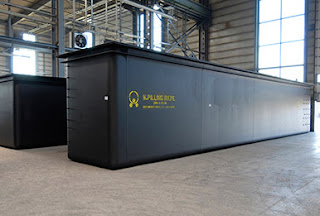How does zinc galvanizing help various industries?
You might not have much idea about this but it’s a fact, we are surrounded by a variety of galvanized products. Let’s understand this with a few examples, electric poles, flyover railings, overbridge garters, railway bridges, auto parts, windmills, corridor railings, etc. In this blog, we are going to highlight , the significance of galvanization, zinc kettle, and a few more.
Before we take a deep dive into this important subject, it makes sense to learn about galvanization.
What is galvanization?
For the unawares, galvanization is a scientifically designed process to apply a coating of zinc to iron or steel-made items. This zinc layer does wonders for metallic items, especially iron and steel. The applied coating of zinc does wonders for the metal as it imparts brilliant properties to the metallic items, including anti-corrosion properties. Owing to its benefits, the process has revolutionized numerous industries. In the ensuing sections, we will highlight industries using galvanization.
Without the protective layer, steel items will rust due to exposure to harsh atmospheric conditions. What is rust? In the language of chemistry, rust is an iron oxide (a kind of red oxide). How does it form? It is formed by the reduction and oxidation reaction of iron and oxygen when metal is exposed to water or air moisture.
In the ensuing sections, we will highlight the benefits of zinc galvanization. Before that, let’s understand an important element of this incredible process, the zinc kettle
What is a zinc kettle?
The Galvanization process can't be imagined without a zinc kettle. It is a structure designed using robust material to immerse steel/iron-made items into the molten zinc to run the process of zinc coating.
As far as the weight of this kettle is concerned, it weighs around 30 tons and has the capacity to hold around 250 tons of molten zinc. Specifications vary from one zinc kettle manufacturer to another. We recommend you do comprehensive homework before buying the product.
Process in galvanization
The scientifically designed zinc galvanization process comprises a set of steps and stages to seamlessly galvanize steel-made items. These steps include:
- Degreasing
- Pickling
- Immersion flux
- Drying and preheating
- Hot dip galvanizing
- Finishing
- Passivation
- Cooling
- Inspection
Benefits of galvanization
Let’s now shift our focus to one of the most important segments of this blog, the benefits, and advantages of galvanization. Here are the benefits of zinc galvanization:
- Lower cost than stainless steel in the long run
- Less maintenance/Lowest long-term cost
- Increased durability of the metallic product
- Coating life and performance are reliable
- Exceptional resistance to mechanical damage
- Protection to small and hidden areas of steel exposed to the environment
- No maintenance
- No time lost in painting and maintenance
- No lost time in surface preparation
Application
Considering the benefits and advantages of galvanization, it is being used in numerous industries and sectors. These include:
- Agriculture
- Automobile
- Power generation
- Railways
- Windmills
- Construction
- Logistics
This isn’t the end. It’s a long list. In this regard, you can discuss this with a famous zinc kettle manufacturer.
Conclusion
Galvanization is a critical process for numerous industries. Never compromise the quality of the zinc kettle. Only buy the product from a leading zinc kettle manufacturer.

.webp)
.png)
Comments
Post a Comment